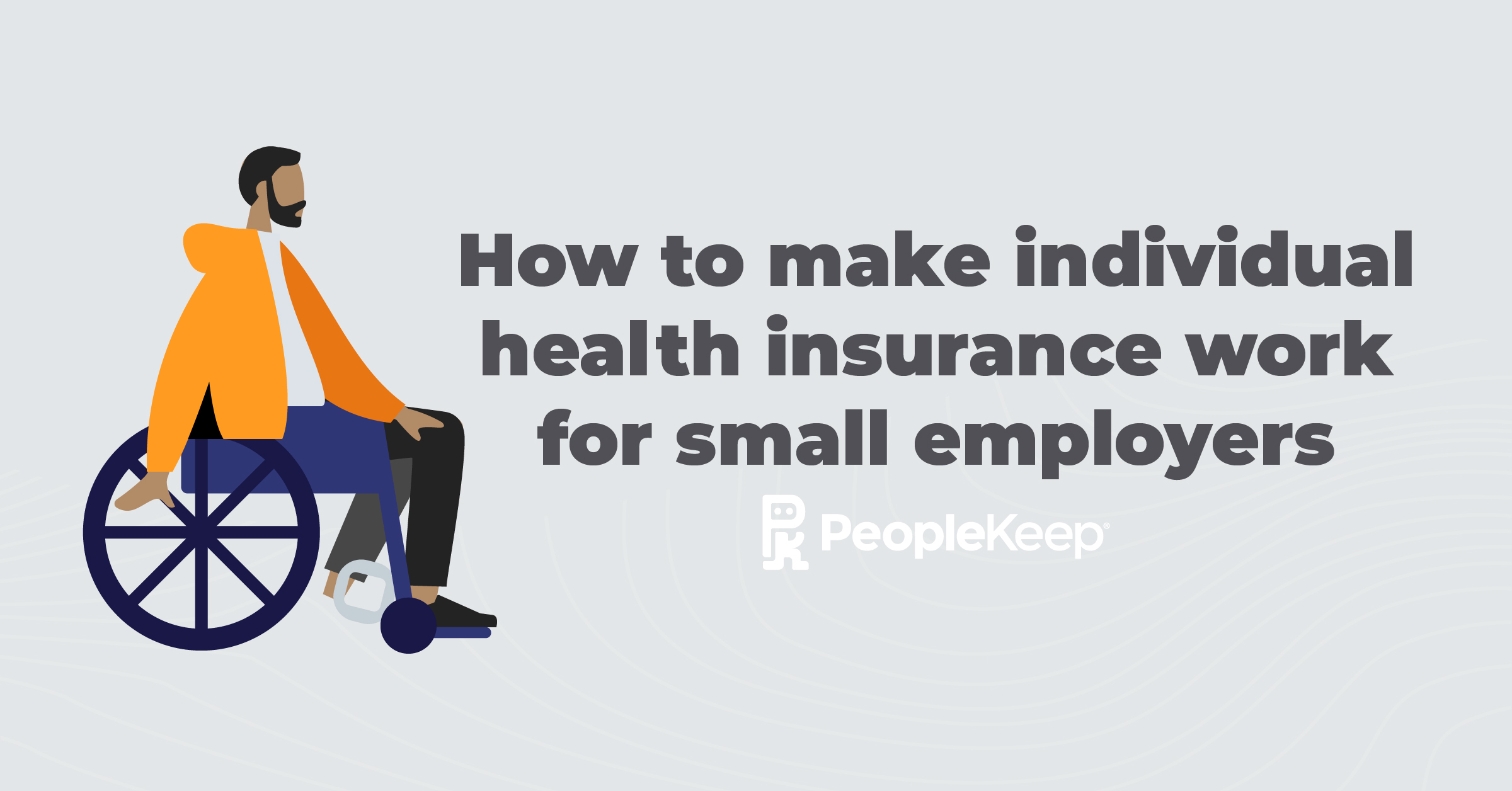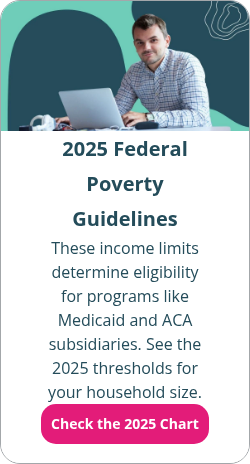Determining ICHRA affordability in 2026
By Chase Charaba on September 20, 2024 at 8:00 AM
If you're an applicable large employer (ALE) with 50 or more full-time equivalent employees (FTEs), your organization is subject to more regulations than smaller businesses. This is especially true when it comes to offering health insurance coverage.
One rule ALEs must follow is the ACA's affordability requirement. The rule ensures that employer-sponsored coverage is affordable to full-time employees. Recently, the IRS updated this requirement, influencing how much employers need to contribute to their eligible employees’ health coverage.
While this affordability rate applies to employers offering traditional group coverage, it also applies to those offering an individual coverage health reimbursement arrangement (ICHRA). In this article, we’ll review what the affordability calculation is for 2026 and what your options are if you’re faced with an unaffordable plan.
In this blog post, you'll learn:
- How to determine if your ICHRA allowance is affordable in 2026
- What employees can do if their allowance is unaffordable
What is the affordability requirement?
The Affordable Care Act's (ACA) affordability rule represents the highest percentage of an employee's household income that they can pay for their monthly premium to be considered affordable. The rule bases this on the least expensive employer-sponsored plan offered by an organization that meets minimum essential coverage (MEC).
The rule ensures that employees have access to affordable health coverage through their employer. In 2026, the affordability standard is 9.96%. So in order for a plan to be considered “affordable,” employees can't be expected to pay more than 9.96% of their household income for their health coverage.
Employers have no way of knowing what their employees' household income is, so the ACA established “safe harbors” as benchmarks. Safe harbors help employers determine if their plans are affordable. The most commonly used safe harbor for affordability determination is the federal poverty level (FPL) safe harbor.
The FPL safe harbor gives employers a maximum premium amount for employee contributions for that year. For 2026, the FPL safe harbor dictates that an employee must pay no more than $129.90 a month in order for the health plan to be affordable.
As long as employers can show that they used a safe harbor, they aren't subject to the employer mandate penalty for unaffordable coverage.
What changes did the IRS make to the affordability requirement for 2026?
While the affordability requirement for 2025 was 9.02%, the IRS raised it1 to 9.96% for 2026. That means the IRS expects employees to contribute more than in 2025. Employers don't need to offer as much for an employer-sponsored plan to be considered affordable. This is different from previous years when the affordability requirement decreased.
This changed the FPL safe harbor amount from $113.20 per month for the employee's maximum contribution to a monthly health insurance premium to around $129.90 for the mainland U.S.
As long as employees aren't paying more than $129.90 per month for their premiums in 2026, the plan is affordable according to the ACA's standards.
If you have a non-calendar year plan, you'll continue to use the 9.02% affordability threshold to determine affordability in 2025 until your new plan year starts.
| Year | Affordability percentage |
| 2026 | 9.96% |
| 2025 | 9.02% |
| 2024 | 8.39% |
| 2023 | 9.12% |
| 2022 | 9.61% |
| 2021 | 9.83% |
| 2020 | 9.78% |
What does the IRS raising the affordability requirement mean for my organization?
The IRS raising the affordability requirement means that a health plan that was affordable in 2025 will continue to be in 2026. So if you offer the same exact health plan in 2026 as you did in 2025, your plan will remain affordable.
In order for your plan to be considered affordable in 2025, you'll need to ensure that your plan doesn't require any of your employees to pay more than 9.96% of their annual household income (or $129.90 per month if you're using the FPL safe harbor).
If you're not using the FPL safe harbor, you can calculate affordability based on your employee's rate of pay. This is the hourly rate multiplied by 130 hours per month as of the first day of the plan year or, for salaried employees, 9.96% of the monthly salary as of the first day of the 2026 coverage period.
How to calculate ICHRA affordability
To be considered affordable according to the ruling, the cost of health insurance for an employee must not be more than 9.96% of the employee’s household income. You'll use the lowest-cost silver plan on the local exchange as the standard for the calculation. You'll also subtract an employer’s ICHRA contributions from the premium.
That means the monthly premium for the lowest-cost silver plan, minus the ICHRA monthly allowance being offered, shouldn't exceed 9.96% of the employee’s household income for the month. If this requirement is met, the ICHRA is considered affordable.
Let’s take a look at the calculation.
Formula:
Household income * .0996 = X
X/12 = Y
Lowest-cost silver plan - Y = minimum affordable ICHRA monthly allowance
Example:
Derrick, an employee at Big Build Construction, has a household income of $45,000. His employer is offering an ICHRA. The lowest-cost silver plan in his area is $550. The calculation for affordability in this case is:
$45,000 * .0996 = $4,482
$4,482 / 12 = $373.50
$550 - $373.50= $176.50
In this scenario, the lowest allowance that's affordable to the employee is $176.50.
You can use this formula to calculate the affordability of any allowances your company is considering for a specific employee class.
What are my options if my health plan won't be considered affordable anymore?
If your current employer-sponsored health plan will no longer be considered affordable for your employees in 2026, you have two options, typically known as “play” or “pay”:
- Play: Increase your employer contributions so the plan is affordable with the new requirements.
- Pay: Potentially pay a penalty for not offering an affordable plan.
Let's go over each in more detail.
Play
If you choose to “play,” then you'll adjust your contributions for the lowest-cost, self-only plan for the 2026 year until your employees are no longer paying more than 9.96% of their household income.
This is your best option if you can afford to increase your contributions. This helps you avoid any potential penalties for not offering affordable coverage.
Pay
If you choose to “pay,” then you'll simply offer an unaffordable plan. You may have to pay the penalty for failing to offer your full-time workers with MEC that meets affordability and minimum value thresholds.
However, not all ALEs are subject to penalties for not offering affordable coverage. While any organization that has 50 or more FTEs has ALE status, the IRS only penalizes organizations with more than 30 full-time employees—not full-time equivalents. To trigger the penalty, at least one of those employees must receive a federal tax subsidies for their health insurance.
So if you have 30 or fewer employees, you could choose to continue offering the plan you have, even if it's considered unaffordable in 2026.
However, if you do have more than 30 full-time employees, you may have to pay a penalty. There are two penalties, also known as employer shared-responsibility payments (ESRP), enforced by the IRS:
- The Section 4980H(a) penalty, or the A penalty:
- This applies when an ALE doesn't offer MEC to at least 95% of its full-time employees in any given calendar month. At least one full-time employee must receive a premium tax credit to help pay for coverage through an ACA marketplace exchange to trigger it.
- The 2026 A penalty is $278.33 per month ($3,340 annualized), multiplied by all full-time employees (minus the first 30).
- The Section 4980H(b) penalty, or the B penalty:
- This applies when an ALE offers coverage to at least 95% of full-time employees, but each full-time employee was not offered an option of minimum essential coverage that was affordable and provided minimum value. The penalty is triggered when a full-time employee of an ALE declines an offer of noncompliant coverage and instead enrolls in subsidized coverage on the ACA marketplace exchange.
- The 2026 B penalty is $417.50 per month ($5,010 annualized) for each full-time employee who receives subsidized coverage on the ACA marketplace exchange.3
Conclusion
For ALEs, paying attention to changes like these is essential to ensure you're offering an affordable plan so you avoid hefty penalties. If you're looking to offer an affordable ICHRA, PeopleKeep can help you stay on top of all the relevant regulations that impact your health plan coverage to make sure you always have compliant coverage for your employees.
This blog post was originally published on September 29, 2020. It was last updated on October 20, 2025.
Check out more resources
See these related articles

Why your small business can't afford to ignore ICHRA in 2026
Small businesses can’t afford to ignore ICHRA in 2026. Discover how it offers affordable, flexible health benefits and strengthens your benefits strategy.

How to make individual health insurance work for small employers
Wondering how small businesses can use individual health insurance? Discover strategies to offer flexible, affordable coverage to your employees.

What to do when your group health insurance premiums go up
Dealing with a health insurance premium increase? This guide has you covered with tips and strategies to navigate changes and keep your coverage affordable.



